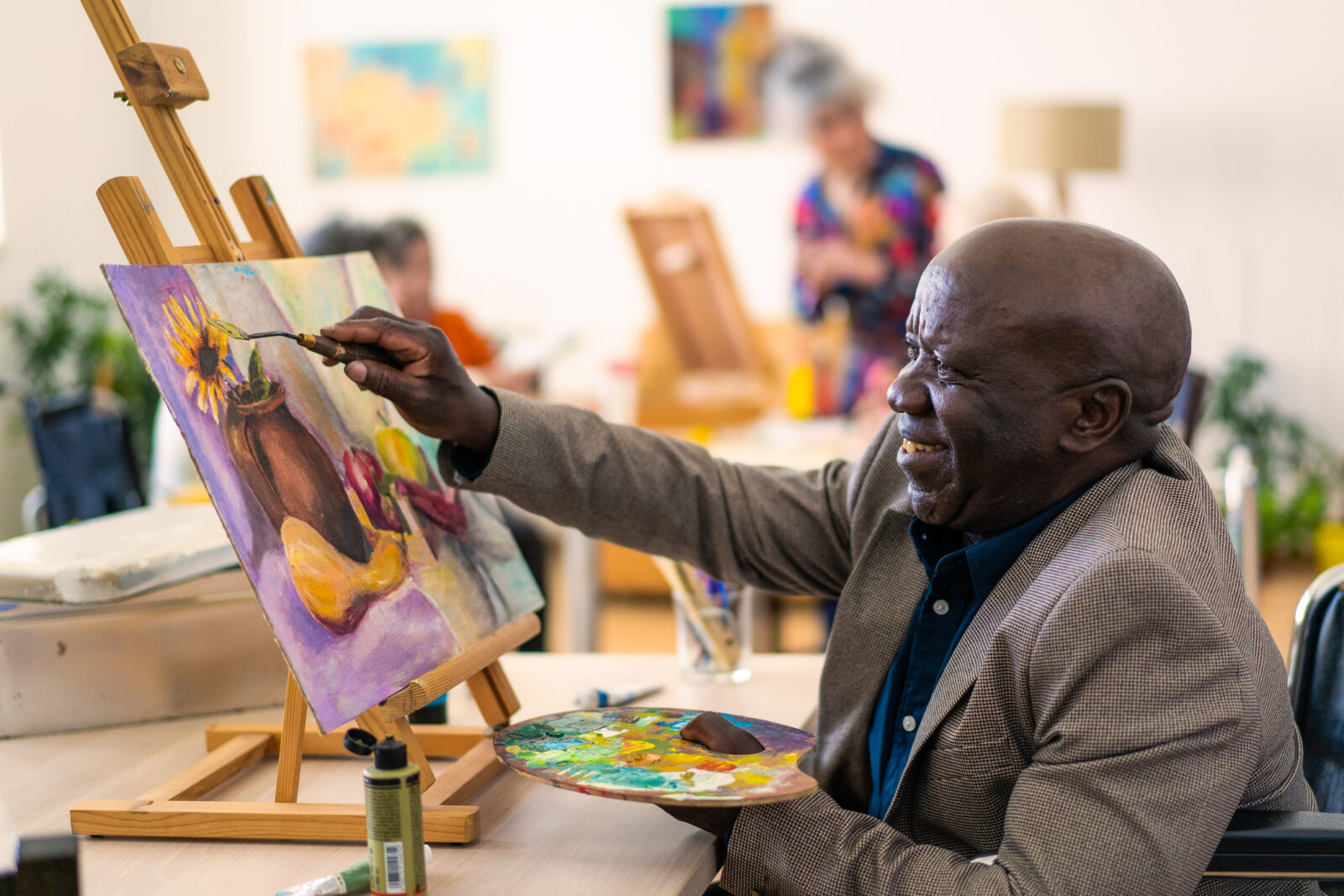Art for Life’s Sake

Creativity isn’t limited to the young; in fact, many artists succeeded later in life. For example, Leonardo da Vinci’s final works, Mona Lisa and The Last Supper, are considered his most influential ones. And Grandma Moses didn’t begin painting until she was 78; her folk art depicting rural life hangs in museums worldwide. Art can be done by anyone at any age, ensuring a more vibrant life.
How art helps
For older adults, art can play a vital role of enrichment while offering benefits for overall well-being. Creating art:
- Stimulates the brain. Research has shown that participating in a range of active activities like painting and even visiting museums can significantly slow cognitive decline for some seniors. In fact, viewing art can increase blood flow to the brain up to 10%, or the same amount as looking at someone you love.
- Helps process emotions. A recent study evaluated how viewing visual art affects emotions. Lauri Nummenmaa, neuroscientist from the University of Turku, Finland, explains, “Even though many of the pieces handled sad or scary topics, the emotions that the people experienced were mainly positive.”
- Encourages social connection. One survey found that over 80% of people who engage with art feel socially connected. Participatory arts have been shown to reduce loneliness and social isolation because they nurture deep relationships between older people, caregivers, and the community.
- Supports physical health. Creative endeavors can decrease stress and anxiety and even reduce pain. Research suggests art may be one way to ease the burden of chronic diseases. Additionally, art can improve both gross and fine motor skills in the geriatric population, from dexterity to hand-eye coordination.
- Brings purpose and happiness. Completing a piece of art, whether it’s a painting, a craft, or a casual sketch or drawing, boosts self-esteem and provides a sense of accomplishment, regardless of age. Research has found that older adults who participate in the arts are better off in five areas of well-being, including pleasure.
Ideas for being creative
You don’t have to be the next Michelangelo to enjoy the benefits of art! To get started on your artistic journey, here are three ways to be creative today:
- Create a memory collage. Compile photographs, memorabilia, and other decorative elements into a collage that tells personal stories or highlights cherished memories. This activity encourages emotional expression and reflection.
- Try painting. A watercolor set and paper are all you need to start to create a landscape, still life, or abstract image. If a blank canvas is too scary, find a paint-by –number set. Painting can be accessible as well as therapeutic.
- Color within the lines. Adult coloring books typically have intricate designs and can feel like a “mini mental vacation.” Use pencils or crayons. Staying in the lines has been demonstrated to be more relaxing than a free-form approach.
Embracing art and creativity in later life not only enhances personal well-being but also contributes to a vibrant and fulfilling lifestyle. Creativity knows no age limits and continues to inspire and enrich lives well into the golden years. In fact, life’s experiences provide a deep well to draw on for art. So, go create art – and a better life!
![Charlesgate [logo]](https://www.charlesgate.net/wp-content/uploads/sites/218/2016/12/logo-new.png)